It was a fine fresh morning – blue sky with some interesting clouds.
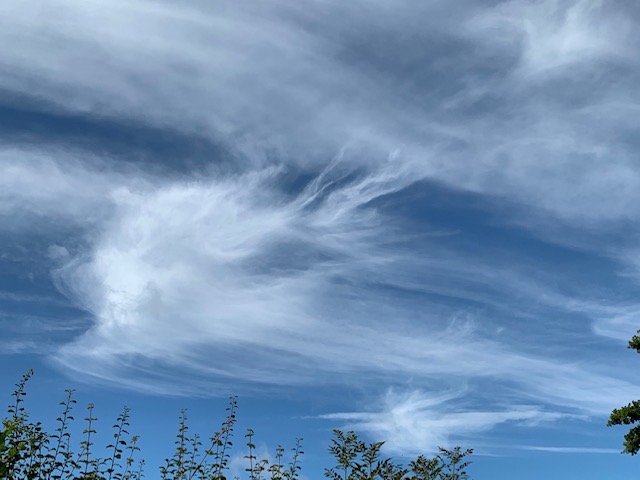 Walking across a huge playing field with football nets and rugby posts – not a soul around – there, sitting in the middle of the field, all on its own, was a white football. …
Walking across a huge playing field with football nets and rugby posts – not a soul around – there, sitting in the middle of the field, all on its own, was a white football. …
 I just couldn’t resist it……I looked all around….. not a soul….. I ran towards it and gave it all the welly I could muster! It shot off at an angle and travelled all of about ten yards…. It was a good feeling though.
I just couldn’t resist it……I looked all around….. not a soul….. I ran towards it and gave it all the welly I could muster! It shot off at an angle and travelled all of about ten yards…. It was a good feeling though.
 I passed The Limeburners pub, originally a row of three lime-workers’ cottages built in the 17th century. Limestone or chalk from the South Downs was burned to make lime for use in building as a mortar and as a soil fertilizer/improver to reduce acidity and make heavy clay soils more friable. The term ‘limelight’ comes from a type of stage lighting once used in theatres and music halls where cylinders of quicklime were burned to produce an intense light. I am learning all sorts of things on this walk.
I passed The Limeburners pub, originally a row of three lime-workers’ cottages built in the 17th century. Limestone or chalk from the South Downs was burned to make lime for use in building as a mortar and as a soil fertilizer/improver to reduce acidity and make heavy clay soils more friable. The term ‘limelight’ comes from a type of stage lighting once used in theatres and music halls where cylinders of quicklime were burned to produce an intense light. I am learning all sorts of things on this walk.
 A little further along, the pastoral views from above Guildenhurst Manor took my breath away – two young deer in the meadow below looked up, twitched their ears and carried on nibbling the grass. Word had obviously reached them that I posed no threat as I couldn’t even kick a football more than ten yards!
A little further along, the pastoral views from above Guildenhurst Manor took my breath away – two young deer in the meadow below looked up, twitched their ears and carried on nibbling the grass. Word had obviously reached them that I posed no threat as I couldn’t even kick a football more than ten yards!
 The path descended and meandered alongside the River Arun. The air was fresh after the previous day’s rain and lots of different butterflies fluttered along before me – it felt as though I was in a Disney film. I saw lots of blackthorn bushes laden with plump sloes – they looked ripe enough for picking but it’s surely far too early?
The path descended and meandered alongside the River Arun. The air was fresh after the previous day’s rain and lots of different butterflies fluttered along before me – it felt as though I was in a Disney film. I saw lots of blackthorn bushes laden with plump sloes – they looked ripe enough for picking but it’s surely far too early?
 A little way along I reached Lordings Lock, once part of an important canal trade route, the Wey and Arun Canal.
A little way along I reached Lordings Lock, once part of an important canal trade route, the Wey and Arun Canal.
 My guide notes told me that in the 1800s it was possible to travel by boat from The Thames in London to Littlehampton on the south coast.
My guide notes told me that in the 1800s it was possible to travel by boat from The Thames in London to Littlehampton on the south coast.
 The route was via the rivers Wey and Arun, linked by the 23-mile Wey and Arun Canal. By 1871, railway competition was fierce and the canal was abandoned.
The route was via the rivers Wey and Arun, linked by the 23-mile Wey and Arun Canal. By 1871, railway competition was fierce and the canal was abandoned.
 Since 1970, the Wey and Arun Canal Trust has been restoring many of the locks and bridges, with the intention of one day reopening the whole canal.
Since 1970, the Wey and Arun Canal Trust has been restoring many of the locks and bridges, with the intention of one day reopening the whole canal.
 Further along, through a gate in the hedge, I saw a couple sitting on the bank of the river – it was such a lovely, peaceful scene.
Further along, through a gate in the hedge, I saw a couple sitting on the bank of the river – it was such a lovely, peaceful scene.
 At Pallingham Quay, I crossed two very quaint brick bridges to cross the Arun and the dry bed of the Canal.
At Pallingham Quay, I crossed two very quaint brick bridges to cross the Arun and the dry bed of the Canal.
 A little further on, after a climb uphill past the tiny, picturesque hamlet of Pythingdean, I was high up on the gallops of Coombelands Equestrian, a cross-country schooling course with over a hundred fences for all standards. I stopped to take a photo of the statue of a smaller than average jockey who stood on a plinth at the Coombelands entrance.
A little further on, after a climb uphill past the tiny, picturesque hamlet of Pythingdean, I was high up on the gallops of Coombelands Equestrian, a cross-country schooling course with over a hundred fences for all standards. I stopped to take a photo of the statue of a smaller than average jockey who stood on a plinth at the Coombelands entrance.
 The views from up here were fantastic, taking in the ridge of the South Downs and from here I could see the square church tower in Pulborough down below. Not far to the east of here, at West Chiltington, are the vineyards of Nyetimber which has chosen FSH as one of the five Sussex charities it supports. Nyetimber has generously sponsored our events by supplying its delicious, award-winning sparkling wines and, but for Covid-19, would have hosted a reception for us in May in its magnificent white barn.
The views from up here were fantastic, taking in the ridge of the South Downs and from here I could see the square church tower in Pulborough down below. Not far to the east of here, at West Chiltington, are the vineyards of Nyetimber which has chosen FSH as one of the five Sussex charities it supports. Nyetimber has generously sponsored our events by supplying its delicious, award-winning sparkling wines and, but for Covid-19, would have hosted a reception for us in May in its magnificent white barn.
 The scenery on this walk was incredibly beautiful – Constable-type scenery – and I once again had the time and space to go within and work on re-centering my own little blue dot.
This section was sponsored by Margaret and Michael Gurney on behalf of The Gurney Charitable Trust. Michael and Margaret are keen walkers who love the Sussex Countryside. Through The Gurney Trust they have been incredibly generous supporters of FSH over many years.
The scenery on this walk was incredibly beautiful – Constable-type scenery – and I once again had the time and space to go within and work on re-centering my own little blue dot.
This section was sponsored by Margaret and Michael Gurney on behalf of The Gurney Charitable Trust. Michael and Margaret are keen walkers who love the Sussex Countryside. Through The Gurney Trust they have been incredibly generous supporters of FSH over many years.
 Walking across a huge playing field with football nets and rugby posts – not a soul around – there, sitting in the middle of the field, all on its own, was a white football. …
Walking across a huge playing field with football nets and rugby posts – not a soul around – there, sitting in the middle of the field, all on its own, was a white football. …
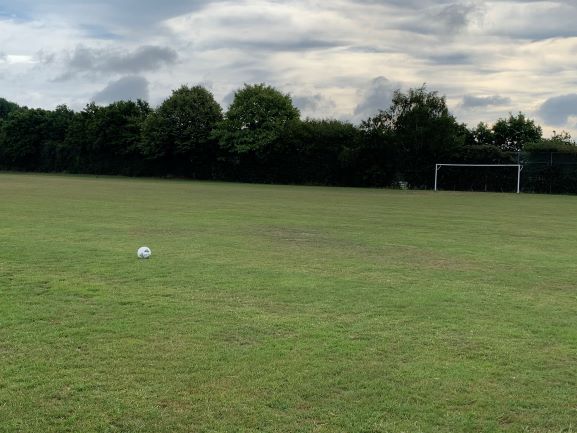 I just couldn’t resist it……I looked all around….. not a soul….. I ran towards it and gave it all the welly I could muster! It shot off at an angle and travelled all of about ten yards…. It was a good feeling though.
I just couldn’t resist it……I looked all around….. not a soul….. I ran towards it and gave it all the welly I could muster! It shot off at an angle and travelled all of about ten yards…. It was a good feeling though.
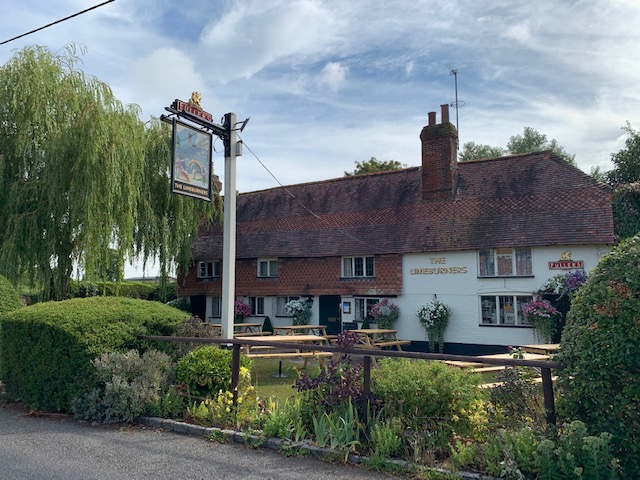 I passed The Limeburners pub, originally a row of three lime-workers’ cottages built in the 17th century. Limestone or chalk from the South Downs was burned to make lime for use in building as a mortar and as a soil fertilizer/improver to reduce acidity and make heavy clay soils more friable. The term ‘limelight’ comes from a type of stage lighting once used in theatres and music halls where cylinders of quicklime were burned to produce an intense light. I am learning all sorts of things on this walk.
I passed The Limeburners pub, originally a row of three lime-workers’ cottages built in the 17th century. Limestone or chalk from the South Downs was burned to make lime for use in building as a mortar and as a soil fertilizer/improver to reduce acidity and make heavy clay soils more friable. The term ‘limelight’ comes from a type of stage lighting once used in theatres and music halls where cylinders of quicklime were burned to produce an intense light. I am learning all sorts of things on this walk.
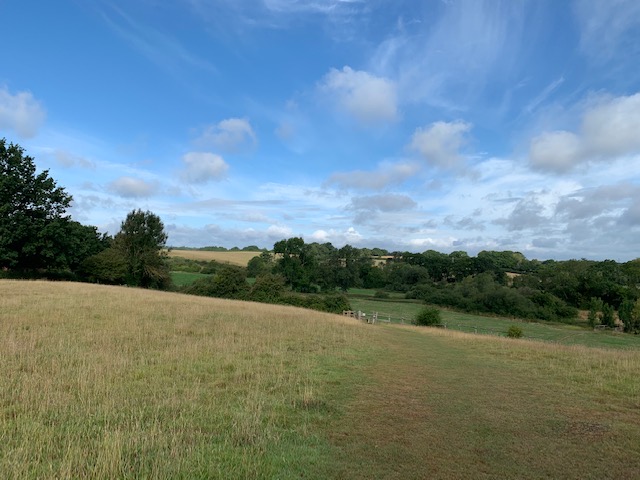 A little further along, the pastoral views from above Guildenhurst Manor took my breath away – two young deer in the meadow below looked up, twitched their ears and carried on nibbling the grass. Word had obviously reached them that I posed no threat as I couldn’t even kick a football more than ten yards!
A little further along, the pastoral views from above Guildenhurst Manor took my breath away – two young deer in the meadow below looked up, twitched their ears and carried on nibbling the grass. Word had obviously reached them that I posed no threat as I couldn’t even kick a football more than ten yards!
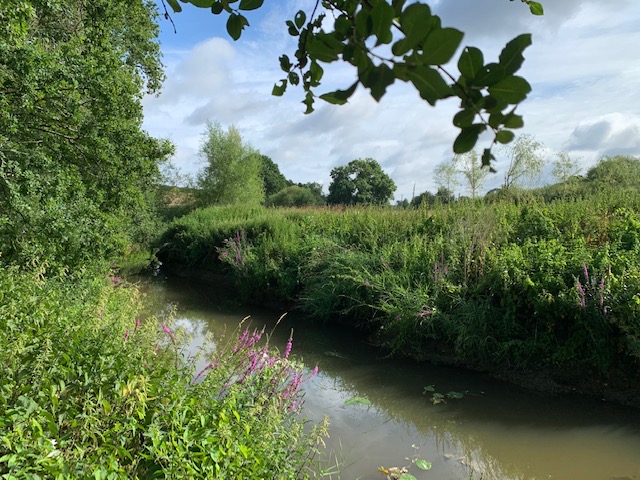 The path descended and meandered alongside the River Arun. The air was fresh after the previous day’s rain and lots of different butterflies fluttered along before me – it felt as though I was in a Disney film. I saw lots of blackthorn bushes laden with plump sloes – they looked ripe enough for picking but it’s surely far too early?
The path descended and meandered alongside the River Arun. The air was fresh after the previous day’s rain and lots of different butterflies fluttered along before me – it felt as though I was in a Disney film. I saw lots of blackthorn bushes laden with plump sloes – they looked ripe enough for picking but it’s surely far too early?
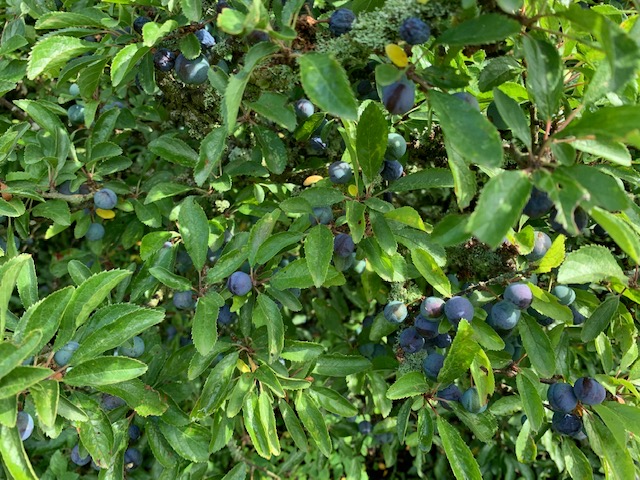 A little way along I reached Lordings Lock, once part of an important canal trade route, the Wey and Arun Canal.
A little way along I reached Lordings Lock, once part of an important canal trade route, the Wey and Arun Canal.
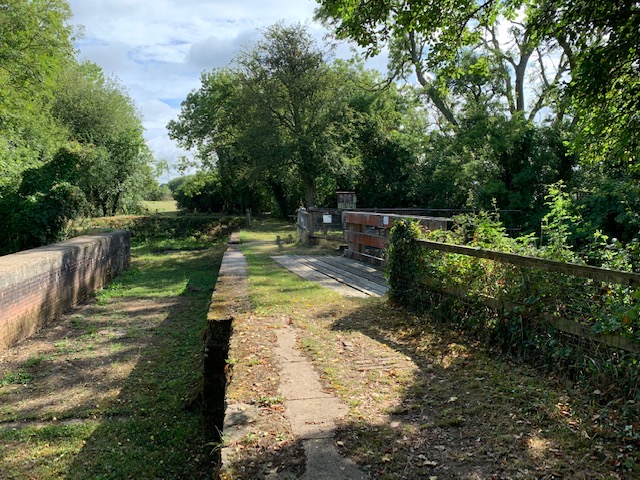 My guide notes told me that in the 1800s it was possible to travel by boat from The Thames in London to Littlehampton on the south coast.
My guide notes told me that in the 1800s it was possible to travel by boat from The Thames in London to Littlehampton on the south coast.
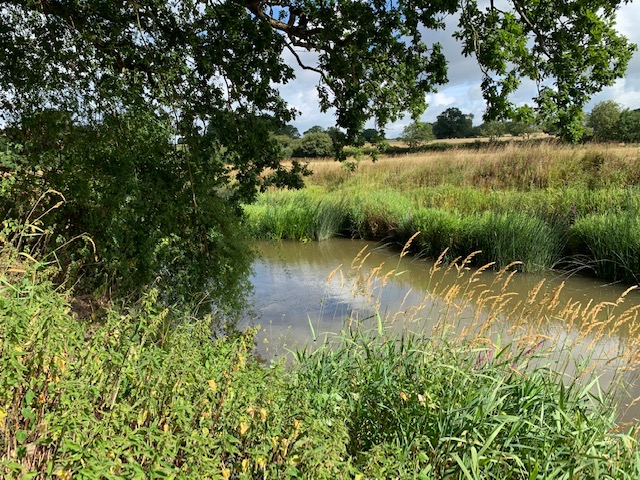 The route was via the rivers Wey and Arun, linked by the 23-mile Wey and Arun Canal. By 1871, railway competition was fierce and the canal was abandoned.
The route was via the rivers Wey and Arun, linked by the 23-mile Wey and Arun Canal. By 1871, railway competition was fierce and the canal was abandoned.
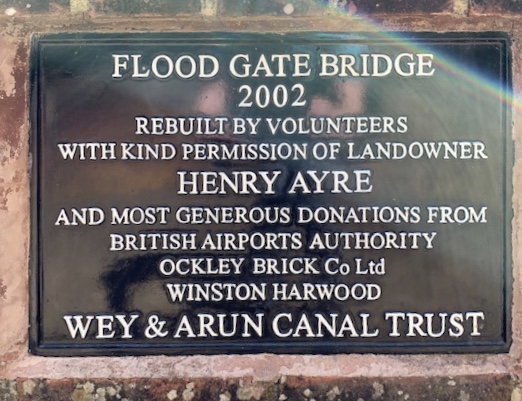 Since 1970, the Wey and Arun Canal Trust has been restoring many of the locks and bridges, with the intention of one day reopening the whole canal.
Since 1970, the Wey and Arun Canal Trust has been restoring many of the locks and bridges, with the intention of one day reopening the whole canal.
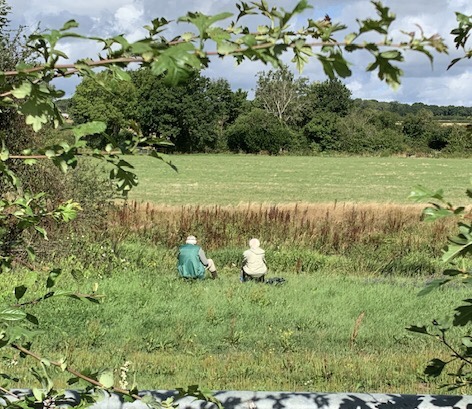 Further along, through a gate in the hedge, I saw a couple sitting on the bank of the river – it was such a lovely, peaceful scene.
Further along, through a gate in the hedge, I saw a couple sitting on the bank of the river – it was such a lovely, peaceful scene.
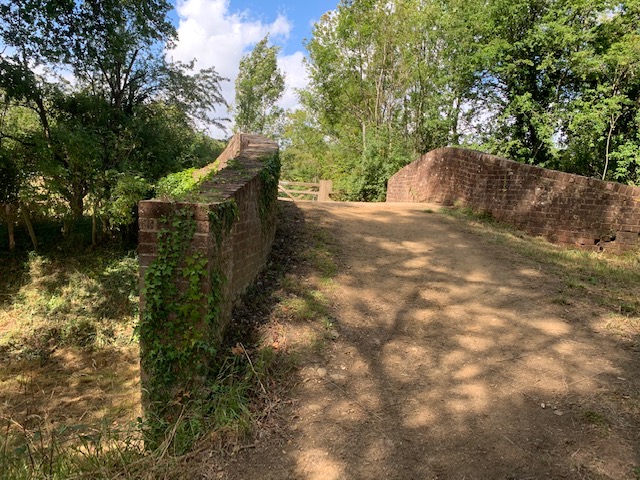 At Pallingham Quay, I crossed two very quaint brick bridges to cross the Arun and the dry bed of the Canal.
At Pallingham Quay, I crossed two very quaint brick bridges to cross the Arun and the dry bed of the Canal.
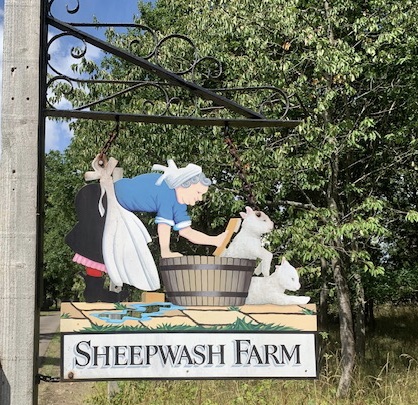 A little further on, after a climb uphill past the tiny, picturesque hamlet of Pythingdean, I was high up on the gallops of Coombelands Equestrian, a cross-country schooling course with over a hundred fences for all standards. I stopped to take a photo of the statue of a smaller than average jockey who stood on a plinth at the Coombelands entrance.
A little further on, after a climb uphill past the tiny, picturesque hamlet of Pythingdean, I was high up on the gallops of Coombelands Equestrian, a cross-country schooling course with over a hundred fences for all standards. I stopped to take a photo of the statue of a smaller than average jockey who stood on a plinth at the Coombelands entrance.
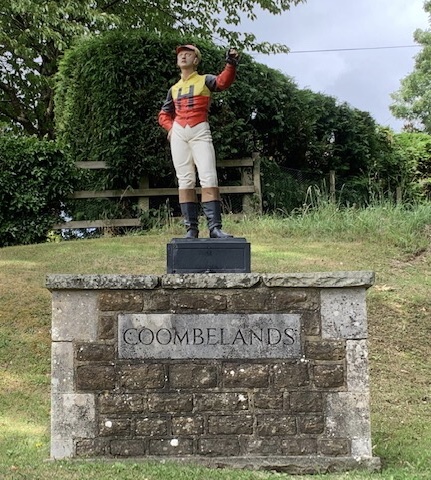 The views from up here were fantastic, taking in the ridge of the South Downs and from here I could see the square church tower in Pulborough down below. Not far to the east of here, at West Chiltington, are the vineyards of Nyetimber which has chosen FSH as one of the five Sussex charities it supports. Nyetimber has generously sponsored our events by supplying its delicious, award-winning sparkling wines and, but for Covid-19, would have hosted a reception for us in May in its magnificent white barn.
The views from up here were fantastic, taking in the ridge of the South Downs and from here I could see the square church tower in Pulborough down below. Not far to the east of here, at West Chiltington, are the vineyards of Nyetimber which has chosen FSH as one of the five Sussex charities it supports. Nyetimber has generously sponsored our events by supplying its delicious, award-winning sparkling wines and, but for Covid-19, would have hosted a reception for us in May in its magnificent white barn.
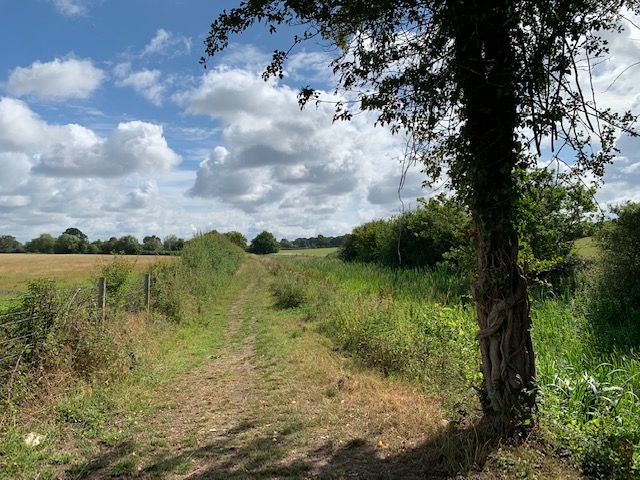 The scenery on this walk was incredibly beautiful – Constable-type scenery – and I once again had the time and space to go within and work on re-centering my own little blue dot.
This section was sponsored by Margaret and Michael Gurney on behalf of The Gurney Charitable Trust. Michael and Margaret are keen walkers who love the Sussex Countryside. Through The Gurney Trust they have been incredibly generous supporters of FSH over many years.
The scenery on this walk was incredibly beautiful – Constable-type scenery – and I once again had the time and space to go within and work on re-centering my own little blue dot.
This section was sponsored by Margaret and Michael Gurney on behalf of The Gurney Charitable Trust. Michael and Margaret are keen walkers who love the Sussex Countryside. Through The Gurney Trust they have been incredibly generous supporters of FSH over many years. 
